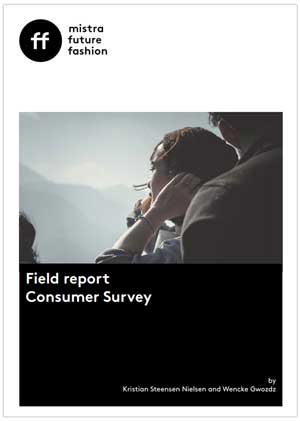Konsumentsegmentering nyckel för att skräddarsy framgångsrik konsumentkommunikation om hållbarhet
What are consumers’ intention and use of new business models like clothing libraries, sharing, second-hand? How do consumers behave in their fashion consumption and in particular of sustainable fashion? Comprehensive data on consumer attitude has been collected in four countries in order to conclude how to nudge consumers to act more sustainably. An early output with key metrics is now summarized in a field report and first analysis is presented in an article in Sustainability.
The research sheds more light on the patterns in the purchase, use and maintenance, and discard phases by analyzing unique data on 4617 adult consumers (aged 18-65) from Germany, Poland, Sweden and the U.S., which is divided into five segments based on clothing consumption behavior. At the low end of the spectrum is a consumer segment that earns the least, consumers mostly budget brand clothing, and the least open to alternative more environmentally friendly business models such as fashion leasing or clothing libraries. At the other extreme lies a small segment that earns the most, engages in high consumption of medium or premium brand clothing, and is most open to alternative business modes. Lying between these two is primarily female segment that purchase an above average amount of clothing form budget brands. In addition to the segments’ different reported purchase behavior and a varying openness to alternative business models, the research identify differences in willingness to pay for clothing made of material that is more environmentally friendly than conventional fabrics. These observations suggest several promising directions for environmental interventions tailored toward specific consumer segment.
Among the most notable findings are the relatively low clothing consumption-rate by almost half the respondents and their strong preference for budget brand clothing. For the low clothing consumers in Segment 1, shifting behavior toward low cost acquisition alternatives is likely to be a more effective approach than trying to further reduce consumption, whereas both approaches—consuming differently and consuming less—are promising for the high volume and high spending consumers in Segments 4 and 5. Segment 2 consumers, on the other hand, who engage in low consumption but higher spending, could be addressed by strategies that promote consuming differently, whereas strategies to raise awareness of the need to consume less could best serve the high volume, budget brand consumers in Segment 3. The design and implementation of any strategy, however, should take into account that no one message can suit all consumer groups; to be successful, interventions must be adapted to each segments’ consumption patterns. The pattern identification and consumer profiling reported here constitutes a first step in this direction, one that provides an important platform for future research aimed at even more comprehensive understanding of clothing consumption. Nonetheless, because simply identifying different behaviors is insufficient to engendering actual behavior change, more research is needed to understand such in-depth aspects as the motivations underlying these actions.
The descriptive statistics for the purchasing behavior of the overall sample and consumer segments are presented in the report, which also gives the size of the individual segments. Over the course of three months, the average consumer purchases an average 5.9 clothing items, of which 2.1 are t-shirts (costing an average of 29 euro for two) and 0.9 is a pair of jeans (around 33 euro), for an overall cost of approximately 153 euro (column 1). Purchasing occurs about twice in the three-month period, mostly in shopping malls and online, followed by second-hand (1.4 times) and high street (1.1 times) shops, with swapping as the least used acquisition mode. Approximately 58.7% of these clothes are from budget brands, 33.5% from casual/medium brands, and only 7.8% from premium brands. The most purchased clothing material, at 61.1%, is new conventional fabric, followed by new organic at 17.8%, second-hand clothing at 13.2%, and recycled materials at only 7.8%.
Successfully reducing the environmental impact of clothing consumption will require the design and implementation—for all three consumption phases—of behavioral strategies tailored to the characteristics and preferences of different consumer groups. The article contributes to the understanding of such strategies by descriptively analyzing different clothing consumer groups based not on traditional segmentation variables such as demographics but on actual purchasing behavior. This approach better encapsulates consumer heterogeneity while more fully identifying clothing consumption patterns. Such identification is highly relevant to developing strategies that foster environmentally friendly clothing consumption because it allows consideration of suitable strategies in relation to the actual purchasing patterns of specific consumer groups. In the article, such strategies for the different consumption phases are proposed and their applicability to each consumer segment discussed.
The research is led by research partner Copenhagen Business School by, Wencke Gwozdz and Kristian Steensen and with input from industry partners H&M, Sveriges Konsumenter and Filippa K. An additional report with comprehensive exploration and analysis will be in published during Fall 2017.




